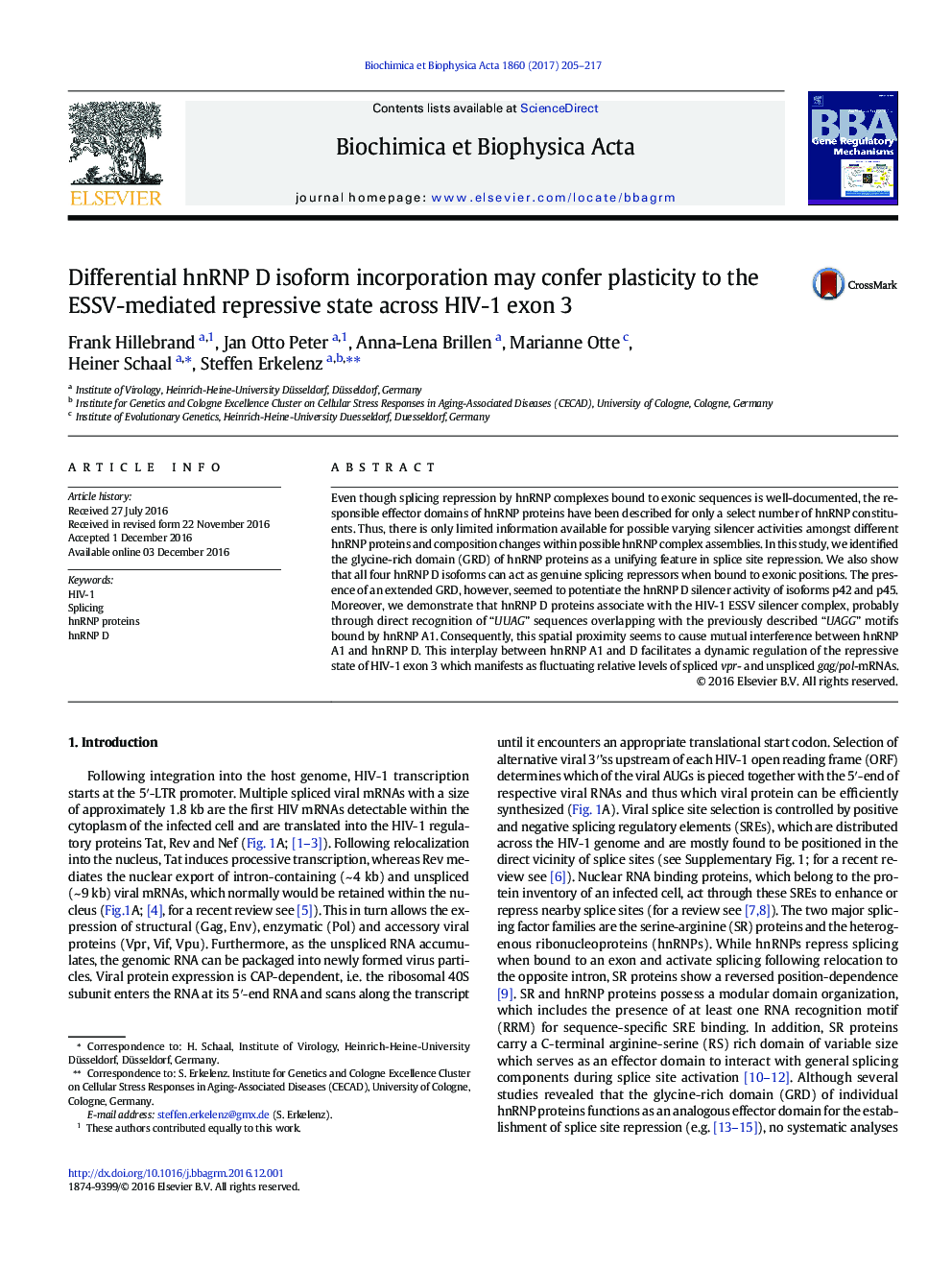| کد مقاله | کد نشریه | سال انتشار | مقاله انگلیسی | نسخه تمام متن |
|---|---|---|---|---|
| 5507821 | 1400351 | 2017 | 13 صفحه PDF | دانلود رایگان |
عنوان انگلیسی مقاله ISI
Differential hnRNP D isoform incorporation may confer plasticity to the ESSV-mediated repressive state across HIV-1 exon 3
دانلود مقاله + سفارش ترجمه
دانلود مقاله ISI انگلیسی
رایگان برای ایرانیان
موضوعات مرتبط
علوم زیستی و بیوفناوری
بیوشیمی، ژنتیک و زیست شناسی مولکولی
زیست شیمی
پیش نمایش صفحه اول مقاله

چکیده انگلیسی
Even though splicing repression by hnRNP complexes bound to exonic sequences is well-documented, the responsible effector domains of hnRNP proteins have been described for only a select number of hnRNP constituents. Thus, there is only limited information available for possible varying silencer activities amongst different hnRNP proteins and composition changes within possible hnRNP complex assemblies. In this study, we identified the glycine-rich domain (GRD) of hnRNP proteins as a unifying feature in splice site repression. We also show that all four hnRNP D isoforms can act as genuine splicing repressors when bound to exonic positions. The presence of an extended GRD, however, seemed to potentiate the hnRNP D silencer activity of isoforms p42 and p45. Moreover, we demonstrate that hnRNP D proteins associate with the HIV-1 ESSV silencer complex, probably through direct recognition of “UUAG” sequences overlapping with the previously described “UAGG” motifs bound by hnRNP A1. Consequently, this spatial proximity seems to cause mutual interference between hnRNP A1 and hnRNP D. This interplay between hnRNP A1 and D facilitates a dynamic regulation of the repressive state of HIV-1 exon 3 which manifests as fluctuating relative levels of spliced vpr- and unspliced gag/pol-mRNAs.
ناشر
Database: Elsevier - ScienceDirect (ساینس دایرکت)
Journal: Biochimica et Biophysica Acta (BBA) - Gene Regulatory Mechanisms - Volume 1860, Issue 2, February 2017, Pages 205-217
Journal: Biochimica et Biophysica Acta (BBA) - Gene Regulatory Mechanisms - Volume 1860, Issue 2, February 2017, Pages 205-217
نویسندگان
Frank Hillebrand, Jan Otto Peter, Anna-Lena Brillen, Marianne Otte, Heiner Schaal, Steffen Erkelenz,